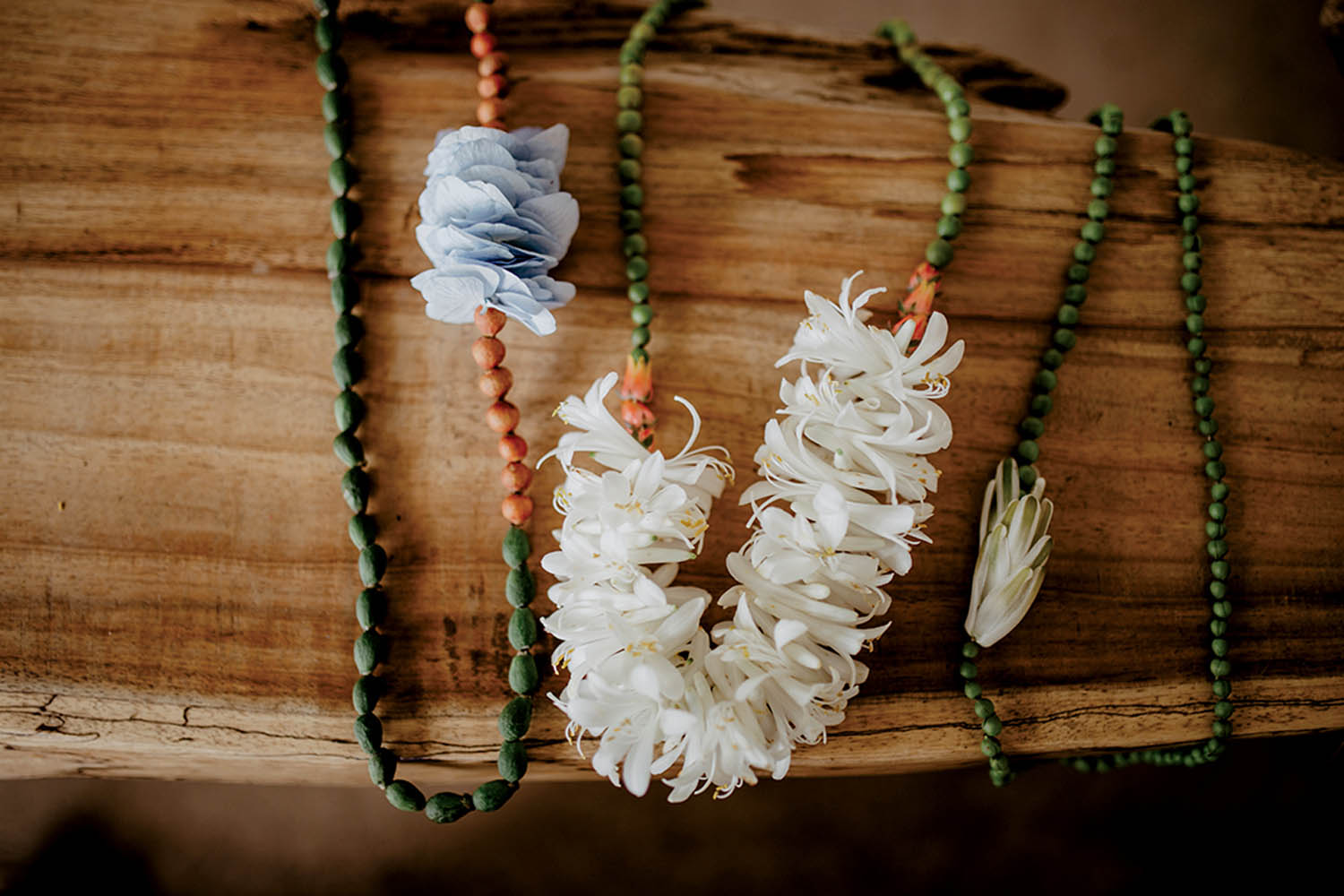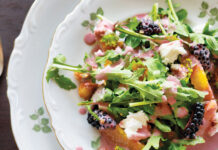Story by Kyle Ellison | Photography by Shanoaleigh Marson

Branching Out: Asymmetrical, wabi-sabi, contemporary and modern—these aren’t the kind of words most people equate with a fresh flower lei. That is, unless, you’re Lauren Shearer, who, through her company, Hawaii Flora + Fauna, crafts innovative, inventive lei in a style that makes them seem more like a necklace than traditional floral design. A Maui girl who grew up making lei out of “generic” flowers like plumeria, Shearer combined her longtime love of plants with aesthetic curiosity, and in 2016 began experimenting with natural materials that most people don’t turn into art—much less put on a string. She’ll take native flowers, like canary-yellow māmane, and pair them with small, lipstick-red petals from ‘iliahi, or sandalwood, and even craft wispy, purple adornments from invasive species like fountain grass. This colorful approach—and the power of Instagram—have rapidly made her one of Hawai‘i’s most sought-after floral artists.

Easy Pickings: While much of her day is spent needling through flowers (her longest lei took seven hours), Shearer also spends lots of time foraging from nature. Though some plants are far afield, many are just beyond the pavement. Shearer says friends call her a “roadsider,” since she’s always pulling over to gather.
Going Local: Not all of Shearer’s floral designs are made from native species, but she takes pride in sourcing her materials right here on Maui. Some mainstream flowers, like purple orchids, she brands as “unsustainable,” since they’re grown in various parts of the world and shipped all the way to the island. As Shearer’s exuberant creativity shows, even introduced species like kiawe, agapanthus, juniper, and pineapple can burst with fanciful color and texture as island-grown art. “A lei connects us with nature,” she says. “It keeps us grounded.”

Always Learning: Shearer wasn’t formally trained in the art, but has learned from books and “aunties and uncles” who have shared their mana‘o, or knowledge, of the craft. There are different methods of tying and weaving, knowing which plants are about to flower at certain times of the year, as well as cultural symbolism that accompanies certain plants. While tradition dictates some of her technique, Shearer also derives inspiration from Japanese wabi-sabi—a philosophy that welcomes imperfection and asymmetrical design. Shearer is humbled by her recent success. “There’s still a lot of trial and error,” she admits. “I feel like I’ve hardly even cracked the surface.”




















